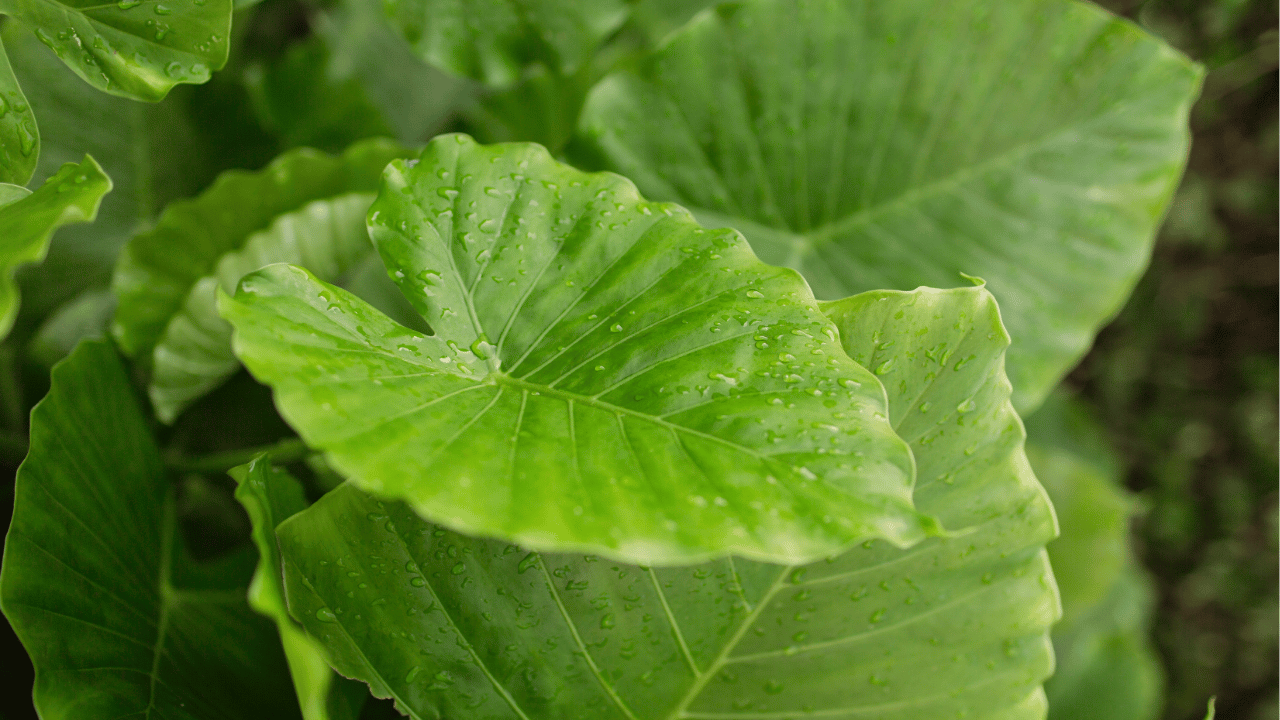Elephant ears (Colocasia, Alocasia, and Xanthosoma) are bold, tropical plants known for their large, heart-shaped leaves and striking appearance. While these stunning plants can transform any garden into a lush paradise, they require proper care to thrive. With the right attention, your elephant ears will grow vigorously, rewarding you with beautiful foliage that can last throughout the season. Here are 10 essential care tips for gardeners looking to nurture their elephant ear plants.
1. Choose the Right Location
Elephant ears love sunlight but prefer indirect light or partial shade to prevent scorching. Placing them in a spot with morning sun and afternoon shade is ideal. Ensure the area is sheltered from strong winds, as their broad leaves can easily tear.
If you’re growing them indoors, choose a bright room with filtered sunlight. While they can tolerate lower light conditions, the leaves may not reach their full size, and growth could be slower.
2. Water Regularly and Consistently
These plants thrive in consistently moist soil. During the growing season, water them deeply, ensuring the soil stays evenly moist but not waterlogged. Check the soil frequently, especially during dry or hot spells, as they can dry out quickly.
Be cautious not to let the soil dry out between waterings, as this can stress the plant and stunt growth. Mulching around the base will help retain moisture, especially for outdoor plants.
3. Ensure Proper Drainage
While elephant ears love moisture, they are prone to root rot if left in standing water. Plant them in well-draining soil, and avoid clay-heavy soils that retain too much water. You can amend the soil with compost or sand to improve drainage.
If you’re growing them in containers, choose pots with drainage holes and avoid letting water sit in the saucer. Elevate the pot slightly if necessary to prevent the roots from being waterlogged.
4. Fertilize for Foliage Growth
Elephant ears are heavy feeders, especially during the growing season. Use a balanced, water-soluble fertilizer every 2-4 weeks to promote lush, green leaves. If your plants are slow to grow or the leaves are pale, they may need a nutrient boost.
Look for fertilizers with a higher nitrogen content, as this supports strong foliage growth. You can also supplement with organic compost or manure, which slowly releases nutrients into the soil.
5. Maintain Humidity Levels
Elephant ears thrive in humid environments, so boosting humidity can significantly improve their health. If growing them indoors, consider using a humidity tray or misting the leaves regularly to mimic their tropical origins.
Placing them near other plants can also create a more humid microenvironment. Outdoors, they naturally benefit from the moisture in the air, but you can increase humidity by grouping plants together or placing them near water features.
6. Monitor for Pests
Common pests like spider mites, aphids, and mealybugs can damage elephant ear leaves. Check the undersides of the leaves regularly for small insects or webbing. A strong spray of water can remove pests, or use insecticidal soap if necessary.
For outdoor plants, slugs and snails can be a problem, especially in damp conditions. Use barriers or natural predators to control them, and keep the area around the plant free of debris where pests may hide.
7. Prune Damaged Leaves
Over time, older or damaged leaves will naturally yellow or brown. Pruning these leaves not only improves the plant’s appearance but also redirects energy to healthier parts. Use sharp, clean shears to cut at the base of the stem.
Regular pruning also helps prevent the spread of diseases, particularly if the leaves have been damaged by pests or weather. Keep an eye on the overall health of your plant, removing any signs of decay promptly.
8. Protect from Cold Temperatures
Elephant ears are tropical plants and can be damaged by cold temperatures. If you live in a colder climate, dig up the tubers before the first frost and store them in a cool, dry place over winter. Indoors, maintain a temperature above 55°F (13°C) to keep them thriving.
For outdoor plants, use mulch to insulate the roots during cooler months. If a cold snap is expected, consider covering them with a frost cloth for added protection.
9. Repot as Needed
Elephant ears grow rapidly and may outgrow their containers quickly. If you notice the roots becoming crowded or growing through the drainage holes, it’s time to repot. Choose a pot that is 2-3 inches larger in diameter to give the roots space to expand.
When repotting, refresh the soil and check the roots for any signs of rot. Trim any unhealthy roots and place the plant in the new pot, ensuring it sits at the same depth as before.
10. Divide Crowded Clumps
As your elephant ears mature, they may form large clumps that can be divided to encourage more vigorous growth. Dig up the plant in early spring, and carefully separate the tubers, ensuring each division has healthy roots and shoots.
Replant the divisions immediately in fresh soil, either in the garden or containers. Dividing every few years prevents overcrowding and encourages healthier, more manageable plants.

